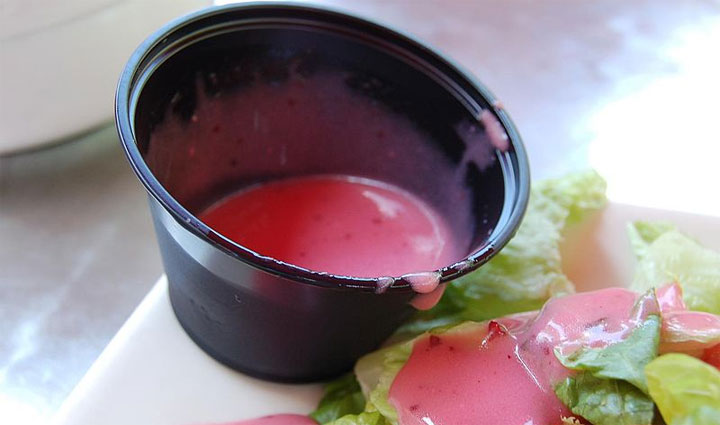Common Culinary Emulsions
Following are a few of the more common culinary emulsions, both traditional and modernist.
Vinaigrette Emulsion
Vinaigrettes are traditional oil-in-water emulsions made with oil, vinegar, other flavorings, and mustard. The emulsifying ingredient is mustard. Specifically, the network of naturally-occurring mucilage in mustard emulsifies the oil and water. In addition to mustard, a common ingredient in vinaigrettes is honey. While honey is not an emulsifier, its thick consistency helps to stabilize the mixture.
Dairy Emulsion
We've already touched on the difference between butter and cream. All dairy products---that is, anything made with milk, contains milk proteins that act as emulsifiers and help milk fats stay suspended in water. Milk and cream are O/W emulsions while butter is a W/O emulsion. In addition, any recipe that calls for cream, milk, or butter will benefit from the natural emulsifying properties of these dairy proteins.
In this recipe for Liquid Popcorn with Caramel Froth, a small amount of butter helps to keep the other liquid ingredients from completely separating.
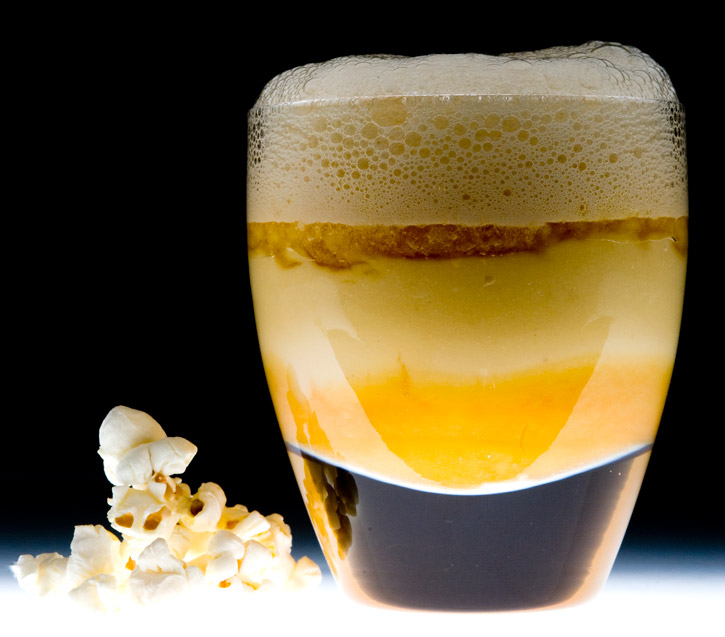
Egg Emulsion
Both parts of the egg contain important emulsifiers. The proteins in egg white act as emulsifiers and thickeners. Egg whites or egg white powder can be used to create soft foams for molecular cuisine. You can also use them to create meringues or add fluffiness to recipes.
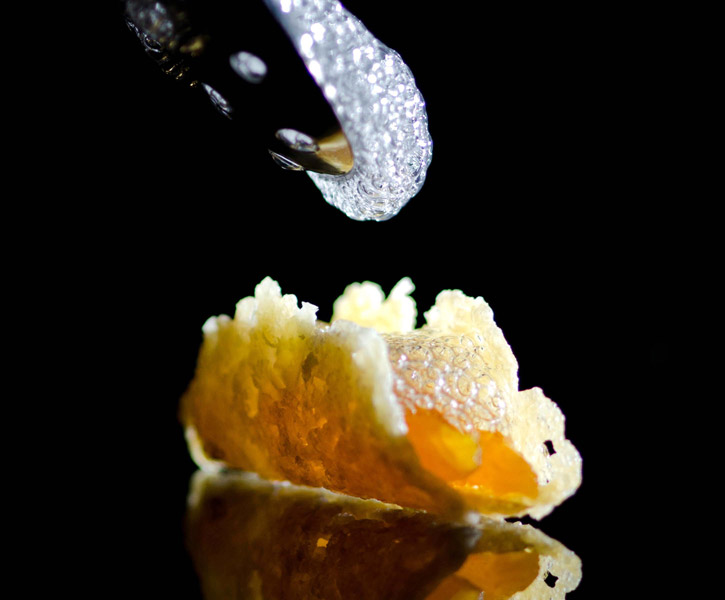
Egg yolks contain two important things not found in egg whites: fat and lecithin. Lecithin is a powerful emulsifier. A small addition of lecithin to a vinaigrette or sauce containing oil will help the liquids stay mixed for a longer time. Many modernist chefs use lecithin derived from soy beans instead of egg lecithin because it is cheaper to produce and because recipes using soy lecithin have the added benefit of being completely vegan.
Fat can support emulsions, but can also interfere with them. Fat is what gives vinaigrettes their body, but even a little fat in an egg white foam can cause the foam to destabilize. That's because foams combine nonpolar air with polar liquids. Fat takes the place of air in some cases and makes the foam weaker.
In the below recipe for Egg, Bread, and Truffle, Chef Digilio of La Vineria de Gualterio Bolivar in Buenos Aires uses the humble egg yolk as a warm surprise inside a thin casing of bread. Here, the eggs are both sauce and custard, but the only ingredient in this emulsion is the egg itself!
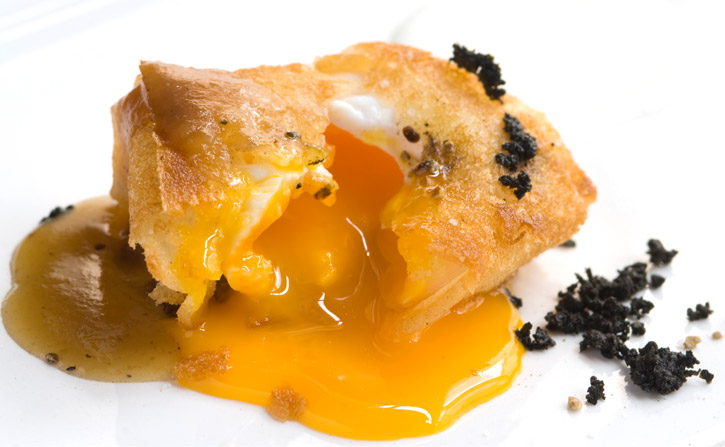
Cheese Emulsion
While cheese is technically a dairy product, we felt it was worth mentioning separately here due to it unique properties. Most cheeses are solids at room temperature, but many become creamy emulsions when heated. But if you've ever accidentally overheated a brie in the oven or tried making your own cheese sauce in the microwave, you know that some cheeses will split into unattractive masses of oil and cheese matter. The problem lies in emulsifiers. Once again, it is the milk proteins in cheese that act as emulsifiers. The particular ratio of fats to other ingredients in cheese determine how it will behave when melted.
But thanks to molecular gastronomy, we can make delicious melting cheese from cheeses that traditionally don't melt well. The structure of cheese emulsifiers can be modified, most notably with sodium citrate, which replaces calcium ions in cheese proteins to create a more stable emulsion and therefore a more meltable cheese. Learn how to make Melty Cheese with Flavorful Dry Aged Cheeses.
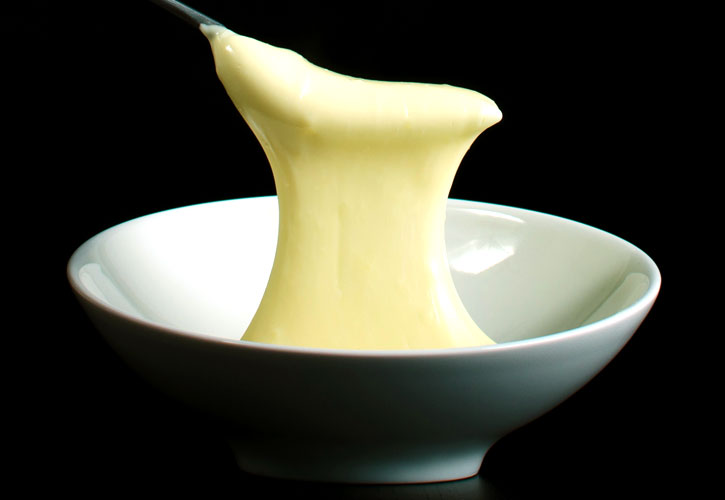
Modernist Emulsion
An interesting application of emulsifiers in molecular gastronomy is to make unique emulsions without traditional emulsifiers such as egg and dairy to create new flavors and textures. One example of this are "creams" without any dairy which are also called constructed creams. Just pick an oil and a liquid and use one of the modernist emulsifiers to create a new "cream". You can use nut oils, rendered fat from bacon or other meat products, olive fat, etc. to make a delicious velvety constructed cream.
In the Mango and Black Olive Discs recipe, molecular gastronomy Chef Ferran Adria uses fat and water from black olives to create an emulsion filling between two mango croquant discs.
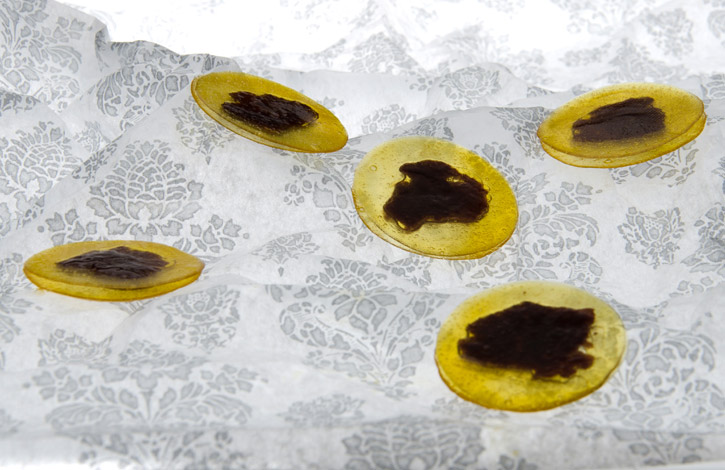




 (3 votes, average: 4.00)
(3 votes, average: 4.00)
